《第二语言习得与英语学习策略》
| 作者 | 丁言仁,文秋芳主编 编者 |
|---|---|
| 出版 | 南京:东南大学出版社 |
| 参考页数 | 372 |
| 出版时间 | 1999(求助前请核对) 目录预览 |
| ISBN号 | 7810505408 — 求助条款 |
| PDF编号 | 834778(仅供预览,未存储实际文件) |
| 求助格式 | 扫描PDF(若分多册发行,每次仅能受理1册) |
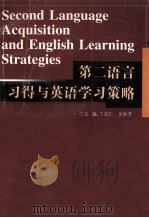
Part Ⅰ:English Language Learning1
Chapter One:Learner Characteristics2
Modifiable variables in high and low English achievers,by Wen Qiufang2
Learner variables and English proficiency of Japanese university students:An exploratory study,by Sachiko Okuda,Hideko Midorikawa,and Masaru Kurihara11
Motivation and classroom behavior,by Chen Ting17
Changes in college English majors'beliefs,by Su Xiaojun20
One text,two readers:A case study,by Wang Jian24
Beliefs,strategies and vocabulary size:Chinese EFL learner's vocabulary retention strategies,by Wang Wenyu34
Chapter Two:Development of Linguistic Competence45
Problems in learning and using English tense-aspects by Chinese ESL learners,by Huang Yueyuan and Yang Suying45
Why some Chinese students cannot be efficient readers,by Liang Jianping54
Why do Zhuang speakers have difficulty pronouncing the English stops?by Zhang Mingqiu56
The effect of writing tasks on the organization of ESL composition,by Ting Yenren63
Influence of tasks on oral performance,by Zhu Lingzhi80
Analysis of lay-out discourses by beginning EFL writers,by Hu Ruiyun90
Differences in cohesive patterns between English and Chinese,by Xu Yuchen99
Lexical cohesion in EFL reading comprehension,by Qiu Wei106
Chapter Three:Development of Communicative Competence111
Communicative competence,"communicative adequacy,"and the me taphors of language proficiency,by Joanna Radwanska Williams111
Promoting EFL learners'pragmatic competence,by Wu Caixia121
Part Ⅱ:English Language Teaching131
Chapter Four:Communicative Approach to English Language Teaching132
Context and English teaching,by Zhu Yongsheng132
Classroom management:drawing attention and encouraging participation,by Lin Xiaohong137
Group work in intensive reading class,by Liang Qinghe143
Affective learning in the EFL classroom and the potential of video films,by Lu Danyun147
Free discussion:an effective method for English teachers'on-the-job training,by Shi Yunzhong152
Beyond language points:Integrating communicative activities in intensive reading classes,by Yu Xiaojian157
Communicative methods for teaching grammar,by Yu Mei161
Promoting oral competence in the intensive reading class,by Lin Lihua164
Communicative approach in intensive reading,by Qiu Mingjuan168
Communicative activities for exercises in college English,by Zhu Xiaoming171
Chapter Five:Cultural Differences and English Language Teaching176
Teaching of English speaking culture and its implications:Teaching conversationand socio-cultural norms,by C.Ruth Pritchard176
Intercultural communication training in language courses,by Don Snow183
Cultural differences and foreign language teaching,by Chen Dongdong193
Vocabulary teaching and inter-cultural communication,by Dong Naiting196
The difference"foreign teachers"make,by Zheng Guolong203
Chapter Six:Teaching Methods and Techniques208
Teachers learning,learners teaching,by Kate Parry208
Enhancing language development of at-risk students with computer technology and combined teaching and learning strategies,by Chen Aiyen220
Immersion program and English proficiency of Chinese students,by Eva Fungkuen Lai227
Integrating reading and writing in the classroom,by Li Junwei235
Can we write poems in English?by Sui Gang240
Creative writing for college freshmen,by Xu Ping246
Vocabulary presentation with the aid of morphological analysis,by Tong Yali253
Making a word blossom,by Du Hui and Guan Hongdi264
Techniques for speech error correction,by Yin Hua270
Dictation in the classroom,by Zhao Jun276
Extensive reading and schema,by Qian Yufang282
Part Ⅲ:Testing and Curriculum Reform285
Chapter Seven:Testing286
Subject reading:what to expect after College English Band 4,by Yang Zhizhong286
Achieve beneficial backwash effect:How to improve College English Test Band 4,by Wang Wangzhu290
Influence of TEMs 4&8 upon English majors,by Duan Lingli297
Chapter Eight:Materials Design300
Improving the course book English for four-year vocational schools,by Dai Qingning300
Make the most out of our textbooks:Adaptation of Focus Listening(Band 1—Band 4),by Zheng Haicui306
Suggestions for improvement of College English Focus Listening,by Lu Jianna310
Short-answer questions in testing:Reading comprehension in college English,by Wang Haixiao and Clifford Hill317
New textbook for middle school students,by Zhu Minghui338
References345
1999《第二语言习得与英语学习策略》由于是年代较久的资料都绝版了,几乎不可能购买到实物。如果大家为了学习确实需要,可向博主求助其电子版PDF文件(由丁言仁,文秋芳主编 1999 南京:东南大学出版社 出版的版本) 。对合法合规的求助,我会当即受理并将下载地址发送给你。
高度相关资料
-
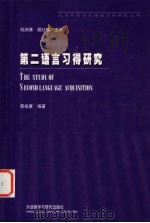
- 第二语言习得研究
- 1999 北京:外语教学与研究出版社
-
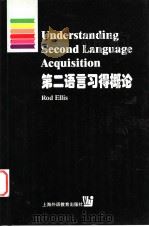
- Understanding Second Language Acquisition 第二语言习得概论
- 1999年04月第1版 上海外语教育出版社
-

- 语言政策学习资料
- 1975 南京大学中文系语言教研室
-

- 语言学学习与研究
- 1983 中州书画社
-

- 语用学与英语学习
- 1997 上海:上海外语教育出版社
-
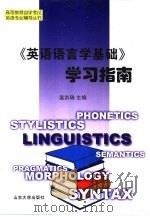
- 《英语语言学基础》学习指南
- 1999 济南:山东大学出版社
-
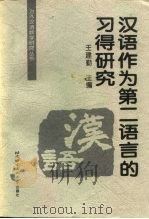
- 汉语作为第二语言的习得研究
- 1997 北京:北京语言文化大学出版社
-
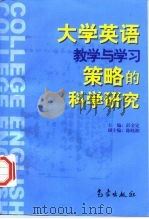
- 大学英语教学与学习策略的科学研究
- 1998 北京:气象出版社
-
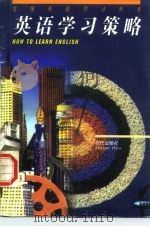
- 英语学习策略
- 1997 北京:现代出版社
-

- 英语学习方法与技巧 英语学习100问
- 1992 北京:海洋出版社
-
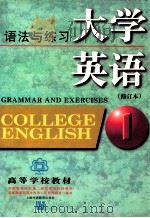
- 大学英语 语法与练习
- 1997 上海:上海外语教育出版社
-
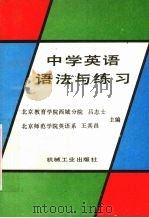
- 中学英语语法与练习
- 1989 北京:机械工业出版社
-

- 中学第二语言学习评价
- 1989 上海:华东师范大学出版社
提示:百度云已更名为百度网盘(百度盘),天翼云盘、微盘下载地址……暂未提供。➥ PDF文字可复制化或转WORD

